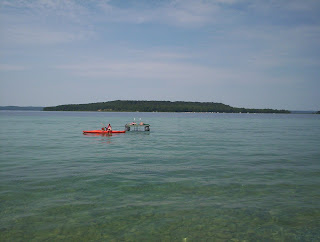1. 1. Google has made everything so easy. It was a snap to create a blog and RSS reader. I had confidence that I could do it because I have watched my wife create her blog on Blogger, but it was even easier than I imagined. Even subscribing to my classmates blogs was intuitive. The RSS Reader was incredibly easy as well and because I went there from my blog page, it automatically subscribed to the blogs I was following. I like the RSS a lot and could see using it as a homepage, but I like iGoogle better because everything is right there: Two emails, facebook, online banking, calendar, weather, scores, and blogs I am following. In summary: Google rocks! Unpleasantly speaking, I was disappointed with the add subscription search function for the RSS. I entered Michigan Football, and many of the titles seemed to be only about Michigan Football, but after subscribing and using them, they really weren’t. This brings up a common frustration with searching in general in the web: It is overwhelming and hard to find exactly what you are looking for. But after wading through the ones I didn’t want, I settled in and enjoyed the easy access to a variety of information relevant to me. I am subscribed to about 24 blogs of interest.
2. 2. I believe that both the Blog and the RSS lend themselves most to the tip of the cone in abstraction: Verbal Symbols, which are words, because most blogs and Readers are only words and some pictures. The possibilities though are numerous. Now the slope of concretion and abstraction in the cone will be contained in different degrees depending on the user’s prior experience with the material being discussed and the blogger’s use of media whether video of a dramatization, still pictures, graphs, coded message with the code decipher, or just words. I really like the Cone and frankly am questioning why in all my Ed classes at CMU I was never introduced to this article. The main question of when and how to introduce new concepts has always staggered me. Why does student A get it right away and student B doesn’t? How can I assure that I am building toward abstraction and not jumping over direct purposeful experiences? Taking into consideration learning styles, student A probably has had an experience with the material to some degree and can connect them to words on the quiz, where student B is confused because the level of abstraction has not been founded on direct or contrived experience. Oversimplified, I know, but this is helpful to me. I instantly go to an Economics class which I taught. Great concepts, but the majority of these Seniors never saw a checkbook before, except when they wanted something really badly and mom gave in and pulled it out. Therefore in their experience, a checkbook was a cool unlimited resource for the things they want. It was not connected to the experience of going to the bank, depositing a set amount of money, connecting that to a checkbook that MUST be balanced and budgeted. That experience would have been paramount to grasping the verbal symbol of ‘checkbook’. Anyone can learn to write a check; date on this line, spell out the amount on this line, etc. So a Blog, I believe can be created in such a way as to incorporate many of the bands of the cone to help the learning build on concepts and interact with their own learning.
An RSS is a little trickier. You can subscribe to some of these educational blogs and having them readily available and updated.
3. 3. I suppose you can also use the RSS in this imaginative way with its inherent strengths: Compare and Contrast. Subscribe to a Keith Olberman and Bill O’Reilly feed and assign reflection questions on differences and similarities and which one needs a bigger dose of humility. Then students post and respond to one another. This undoubtedly incorporates all of the inherent strengths Siegel espoused. The reality is that you could do this through editorials from the newspaper, so I don’t know that it solves a particular Postman problem. To me it is supporting my objective of higher level thinking in analysis and evaluation. It does solve problems of efficiency and relevancy, which are important issues.
Now a blog can move through the cone effectively and use many of its inherent strengths imaginatively. In a single blog lesson on frogs, a student can click hypelinks of various frogs they want to learn about as well as watch a dissection video or life cycle video, complete with questions to answer in the comment section. Instead of a simply double spaced typed one page paper on a three toad sloth, a student could be assigned a blog about the sloth, with links and pics and even a three toed theme background. Wow! This gets me excited about actually implementing such things in the classroom!





